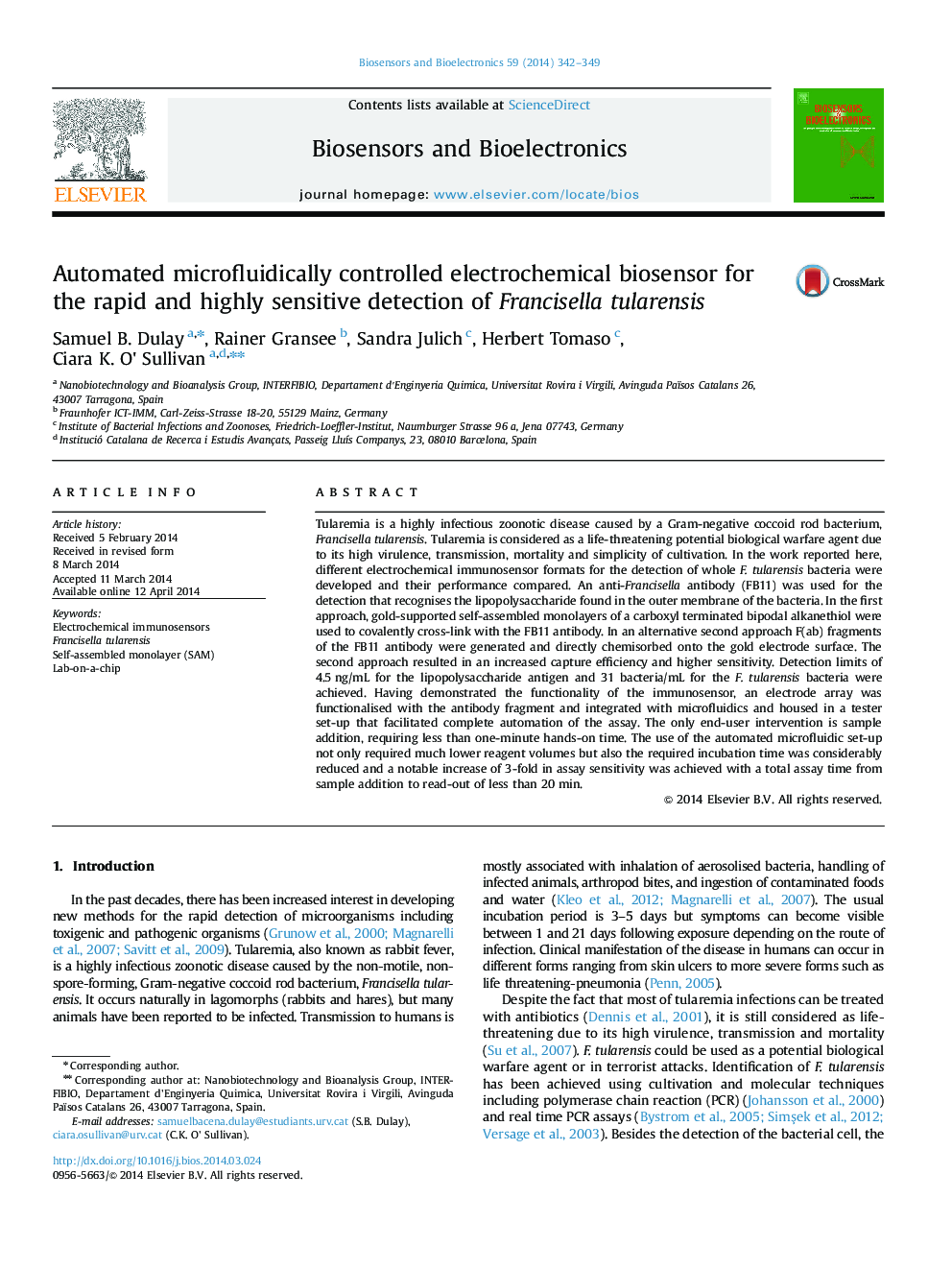| کد مقاله | کد نشریه | سال انتشار | مقاله انگلیسی | نسخه تمام متن |
|---|---|---|---|---|
| 7233571 | 1470972 | 2014 | 8 صفحه PDF | دانلود رایگان |
عنوان انگلیسی مقاله ISI
Automated microfluidically controlled electrochemical biosensor for the rapid and highly sensitive detection of Francisella tularensis
دانلود مقاله + سفارش ترجمه
دانلود مقاله ISI انگلیسی
رایگان برای ایرانیان
کلمات کلیدی
موضوعات مرتبط
مهندسی و علوم پایه
شیمی
شیمی آنالیزی یا شیمی تجزیه
پیش نمایش صفحه اول مقاله

چکیده انگلیسی
Tularemia is a highly infectious zoonotic disease caused by a Gram-negative coccoid rod bacterium, Francisella tularensis. Tularemia is considered as a life-threatening potential biological warfare agent due to its high virulence, transmission, mortality and simplicity of cultivation. In the work reported here, different electrochemical immunosensor formats for the detection of whole F. tularensis bacteria were developed and their performance compared. An anti-Francisella antibody (FB11) was used for the detection that recognises the lipopolysaccharide found in the outer membrane of the bacteria. In the first approach, gold-supported self-assembled monolayers of a carboxyl terminated bipodal alkanethiol were used to covalently cross-link with the FB11 antibody. In an alternative second approach F(ab) fragments of the FB11 antibody were generated and directly chemisorbed onto the gold electrode surface. The second approach resulted in an increased capture efficiency and higher sensitivity. Detection limits of 4.5Â ng/mL for the lipopolysaccharide antigen and 31 bacteria/mL for the F. tularensis bacteria were achieved. Having demonstrated the functionality of the immunosensor, an electrode array was functionalised with the antibody fragment and integrated with microfluidics and housed in a tester set-up that facilitated complete automation of the assay. The only end-user intervention is sample addition, requiring less than one-minute hands-on time. The use of the automated microfluidic set-up not only required much lower reagent volumes but also the required incubation time was considerably reduced and a notable increase of 3-fold in assay sensitivity was achieved with a total assay time from sample addition to read-out of less than 20Â min.
ناشر
Database: Elsevier - ScienceDirect (ساینس دایرکت)
Journal: Biosensors and Bioelectronics - Volume 59, 15 September 2014, Pages 342-349
Journal: Biosensors and Bioelectronics - Volume 59, 15 September 2014, Pages 342-349
نویسندگان
Samuel B. Dulay, Rainer Gransee, Sandra Julich, Herbert Tomaso, Ciara K. O׳ Sullivan,